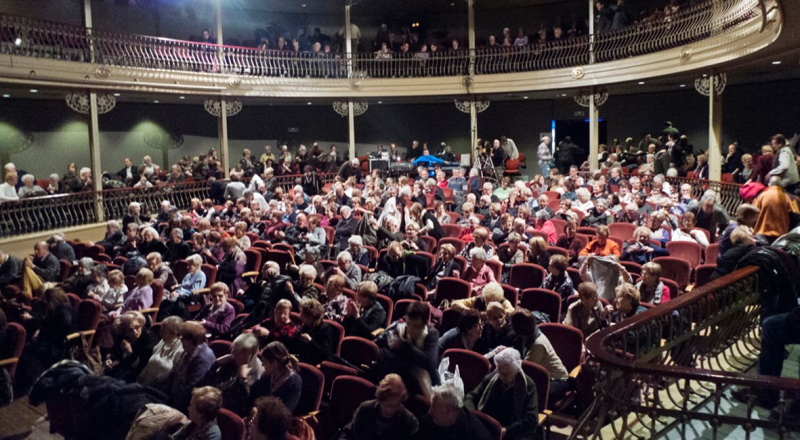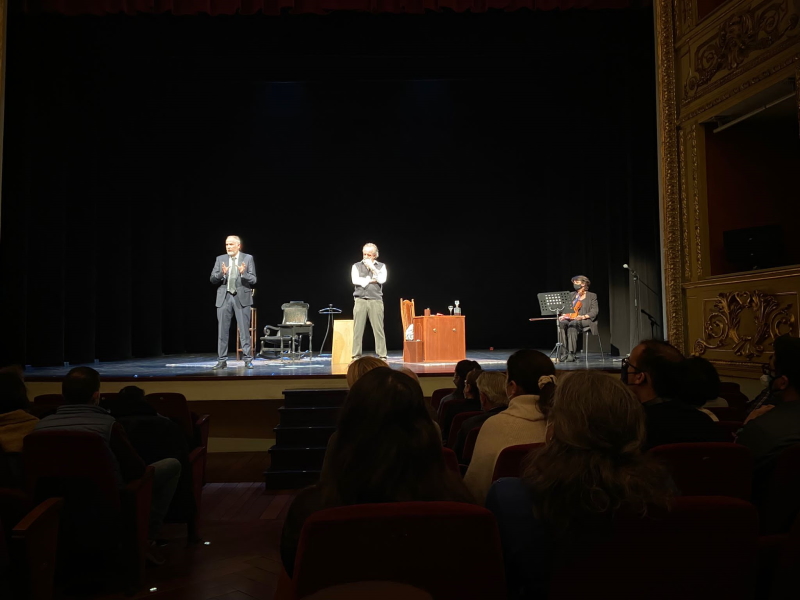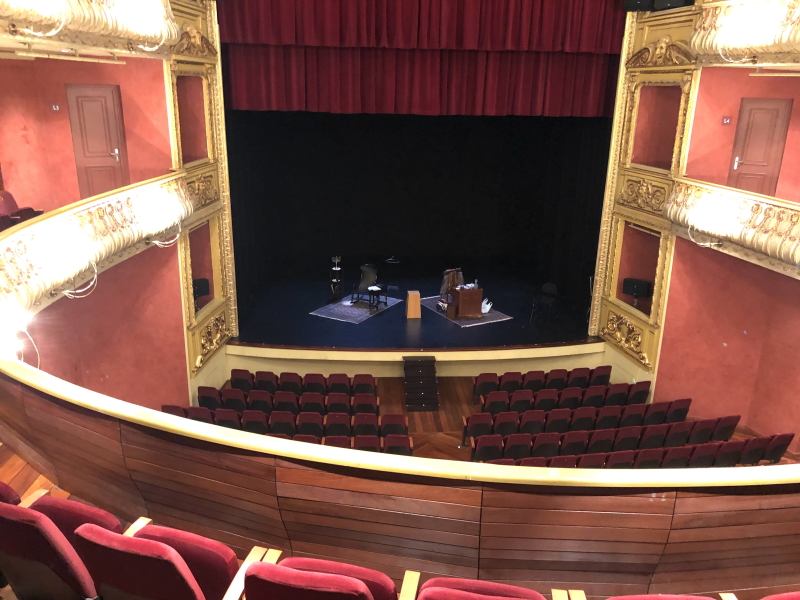On November 1st, 2005, the United Nations General Assembly decided to designate January 27th as the annual International Day of Commemoration in Memory of the Victims of the Holocaust.
This year the remembrance was particularly evocative, through renewed very creative manifestations of empathy and courage, despite the difficulties generated by the global presence of COVID-19 and its restrictions in much of the world. Below we present two models used by Dr David Serrano Blanquer in Barcelona, this year.
Charlotte of Grünberg
General Director
Universidad ORT Uruguay
Department of Jewish Studies - About the International Holocaust Remembrance Day
Text by David Serrano Blanquer, Visiting Professor at Universidad ORT Uruguay and Director of the documentary film “Giza, the girl with the suitcase”.
How to commemorate a date like this in these times? What is the best way to remember, denounce and prevent what totalitarianism means?
The truth is that these are questions which do not have easy answers. However, the only thing that is clear is that you must be proactive, you must set on the working mode and put your shoulder to the wheel, however possible, and pull it together.
The first way I found was within the framework of an impressive Modernist theatre such as the Ateneu de Igualada (a town near Barcelona, known since the Middle Ages for the exquisite treatment of leather and dyes), where we projected the documentary made by the Universidad ORT Uruguay and the Ramón Llull University of Barcelona “Giza, the girl with the suitcase” (Best Documentary Award at the Punta del Este Jewish Film Festival, 2014).
The theatre is a majestic building from 1878, with an auditorium and two floors of beautiful boxes, where Margarita Xirgu premiered "Yerma" by García Lorca, in 1935. With an enthusiastic limited capacity of over 300 full seats (more was impossible due to COVID-19 restrictions, despite the waiting list), an overwhelming silence shook around during the 49 minutes of the magnetic story of Giza and Danusia, two beautiful women who demonstrate their courage when facing the most extreme situations anyone can imagine.
Two women who symbolize resistance and the fight against barbarism, against oblivion, against the repetition of horror. Subsequently, the open debate with a dedicated audience was very intense, deep, until Giza finally appeared on the screen to talk with them. Initial shock and fervent standing ovation. Emotion, more applause, tears, a flow of emotions that was extended with up to three more sections of applause.

And a conviction, these women legacy is unmissable. They clearly show us the way forward with their unwavering commitment to justice. I still remember Danusia's last hug in Warsaw two months before she left us, with her strength, with her humility and with her scrutinizing and mischievous look. I left crying; I knew that she would be gone soon but that she had had the honour of meeting one of the bravest women I have ever met. Giza continues to guide me, and she will continue to guide me always; she starts the countdown until we can hug again, and that COVID-19 prevents us.
The second way, on the same 27th and with the framework of the Theatre Principal de Sabadell (one of the oldest theatres in Catalonia, from 1839, with an auditorium and three luxurious levels of boxes), where I organized a tribute to the victims and survivors through art, literature, with the adaptation of “Whereabouts Unknown”, a prescient, courageous, exemplary novel by another great woman, Katherine Kressmann Taylor.
In 1938, Kressmann Taylor dared to show what would happen in Europe and in the world if what was beginning to emerge in Germany succeeded. She had to do it with a male pseudonym in order to be heard. It was a warning, a warning that the American society had to listen to. I had held the text in my heart for many years, and it was precisely when my heart failed, just 3 years ago, that I decided I had to take this text of this third great woman to the stage.
And not only that, I had to do it in the suit and skin of Max Eisenstein, a German who sees how his country and his people subtly but relentlessly succumb to the destructive force of a brutal movement. He sees it from San Francisco, in the United States, where he has seen an art import business grow together with his German childhood friend, Martin Schulz (Josep M. Roviralta), who in 1932 decides to return to Germany with his family.

From there on, everything changes. What a skill that of Kressmann Taylor, to make us see that change in the world through simple words reflected in the letters exchanged during a short year between Max and Martin, Martin and Max! Friendship, love, solidarity, trust, everything everything blows up even before the starting of a war that is not yet in sight.
A fast-paced story, full of growing intrigue that catches the viewer in a spiral of emotions, caught by the words spoken and by a magical violin, that of Canòlich Prats, violinist of the Orquestra Simfònica del Vallès, which expresses the evolution of the two characters and the emotions the public is feeling. As a spectator the silence is full of moving words, as an actor the words spoken come from the depths of the heart.
We formed the Som-2 theatre group to bring this play to the stage, and for that alone, the trip was already worth it. We will continue to take her to theatres and schools until the voice and music allow us to.
Watch the documentary “Giza, the girl with the suitcase”.
